Open Electricity Dispatch — June 2025

Each month, we round up the most interesting shifts in the grid – new records, infrastructure updates, and other signals of change in Australia’s electricity system.
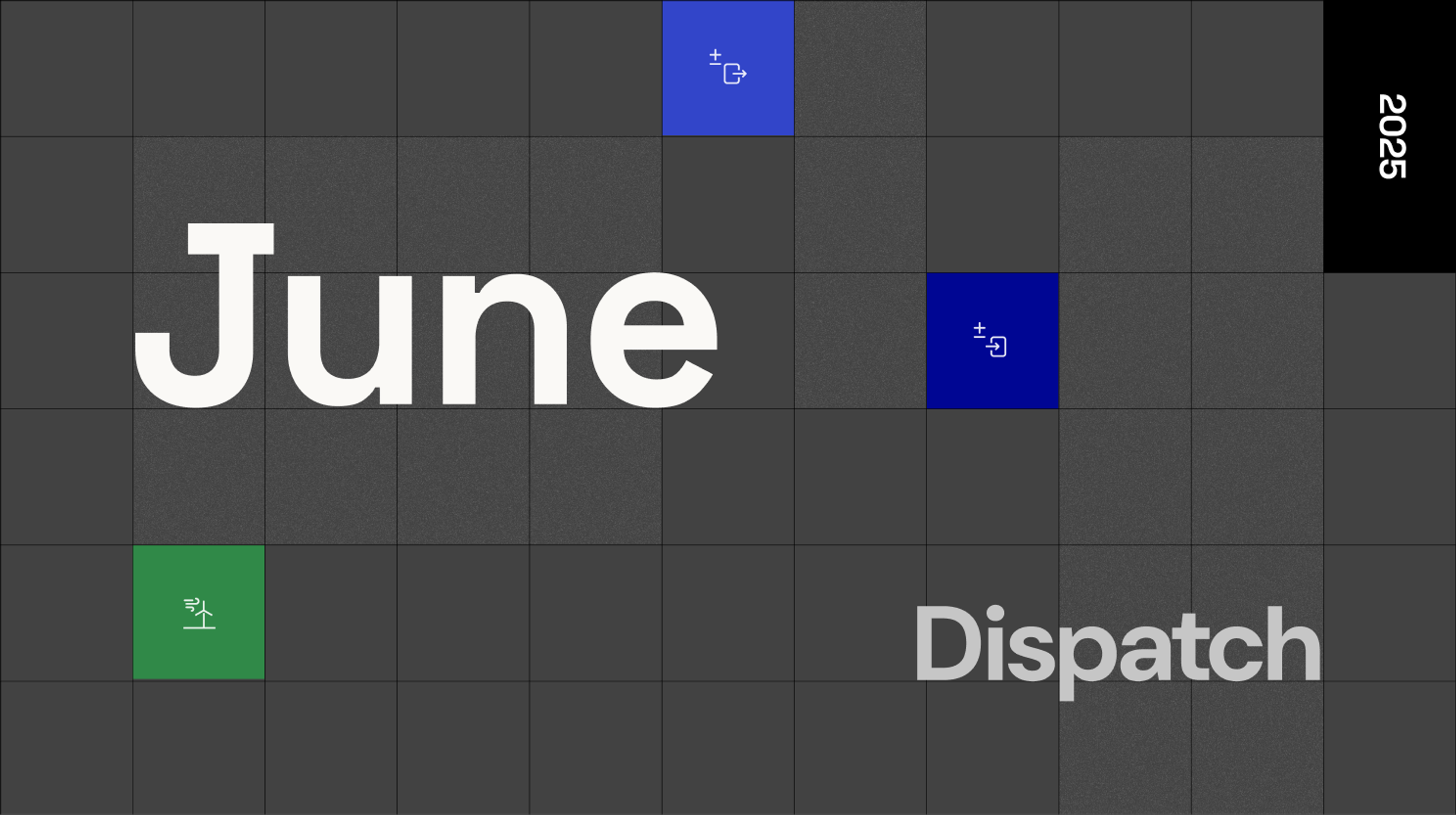
What caught our eye this month:
🔋 Battery records fall across the NEM
💨 NEM daily wind record broken, twice
⚡ Koorangie pushes NEM daily battery discharge to new high
🔥Yallourn outage prompts higher gas burn in Victoria
🔌 Ulinda Park BESS plugged in
🌀 Wambo Wind starts generation in QLD
June typically sees total electricity generation across the NEM about 4% higher than the monthly average for the year, driven by colder weather and increased heating. This higher demand coincides with a seasonal low in solar output.
The increase in coal generation from May to June is inconsistent, with over 5% growth in 2024 but slight declines in 2022 and 2023. In all three years, coal and gas remain high across the winter months.
Gas generation rises sharply in May – by about 40–60% in recent years – and typically continues to grow in June, though at a slower pace. In Victoria, NSW and Tasmania, gas output in June is often more than double the annual monthly average, though these states use little gas for the rest of the year.
Wind also sees an uptick through winter, and while June 2024 was unusually weak, this year brought a big rebound, translating to strong year-on-year growth.
There were 98 records broken in June. View them all.
Here’s your monthly dispatch from Open Electricity:
Notable Records:
Monthly battery records have been coming thick and fast in recent times. NEM battery discharge set new highs in January, March, April and May – and June has continued the trend. The June monthly discharge reached 128GWh, over 41% greater than the May record.
June is also notable because, for the first time, every mainland NEM state broke its own monthly battery discharge record (Tasmania does not currently have any utility batteries). This is the first time all mainland states have set new monthly battery records in the same month - highlighting the scale and consistency of growth across the system.
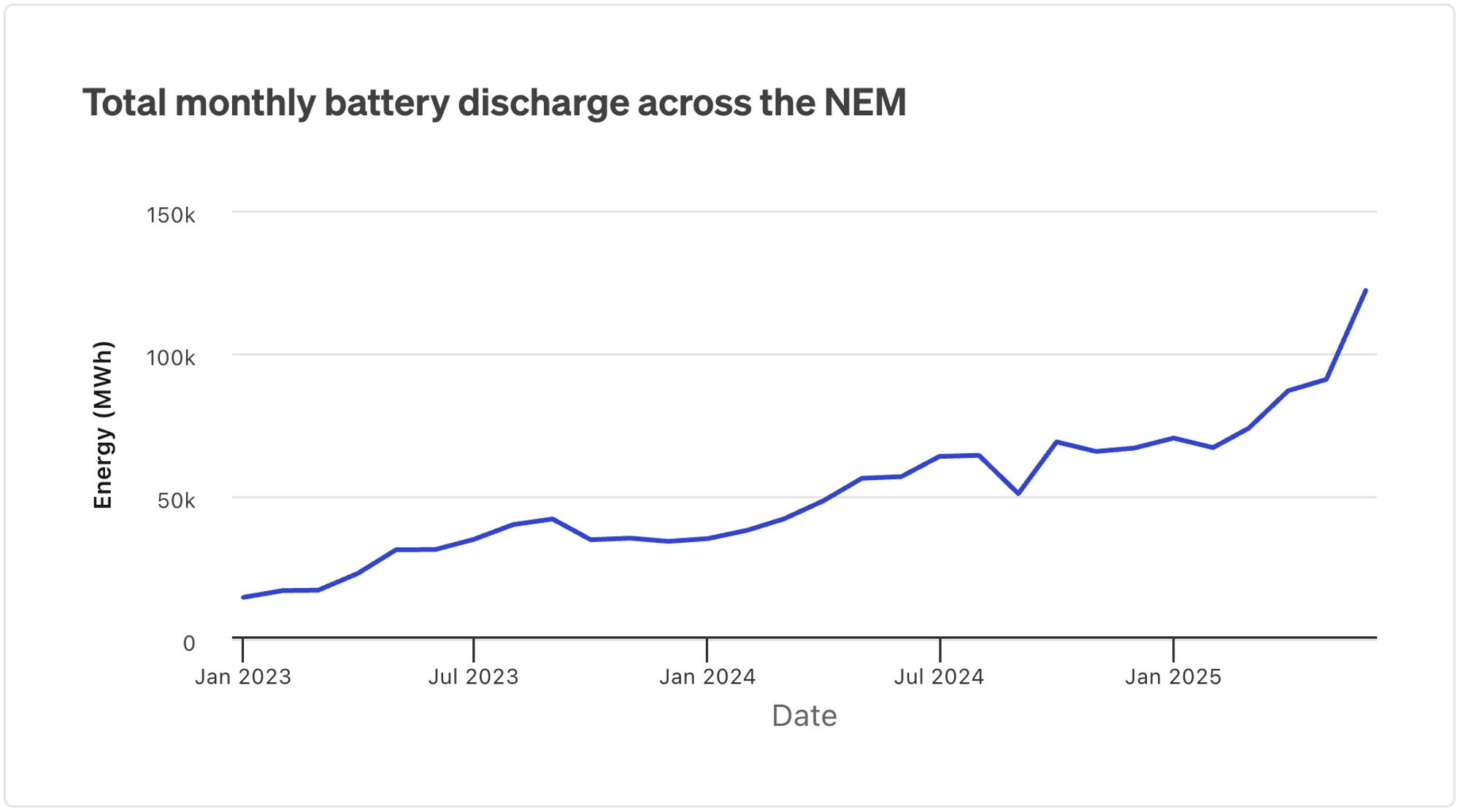
While Open Electricity doesn’t display records until the end of a given time period, a quick check of generation data shows that Queensland has already broken its yearly records for both battery charging and discharging.
In 2024, battery discharge contributed 127GWh to the state’s total generation – about 134% higher than in 2023. That growth has accelerated further in 2025, with this year’s total surpassing the 2024 figure on 23 June – 229% higher than at the same time last year.
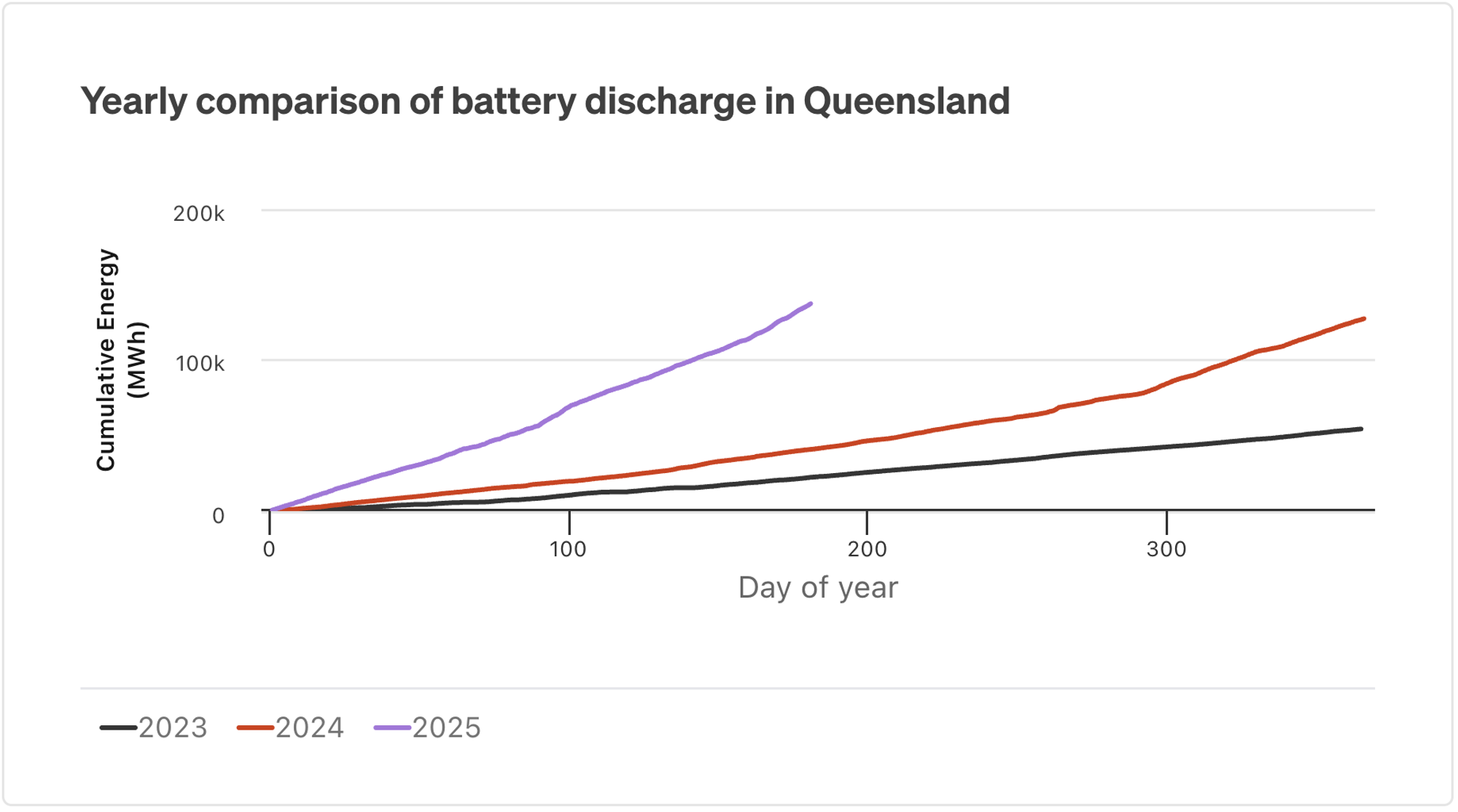
While batteries still make up a small share of Queensland’s energy mix – about 0.5% of total generation – their value lies in their flexibility, which allows them to supply power during periods of high demand and cost. And with more battery capacity under construction than currently operating in the state, we can expect strong growth in Queensland batteries for some time.
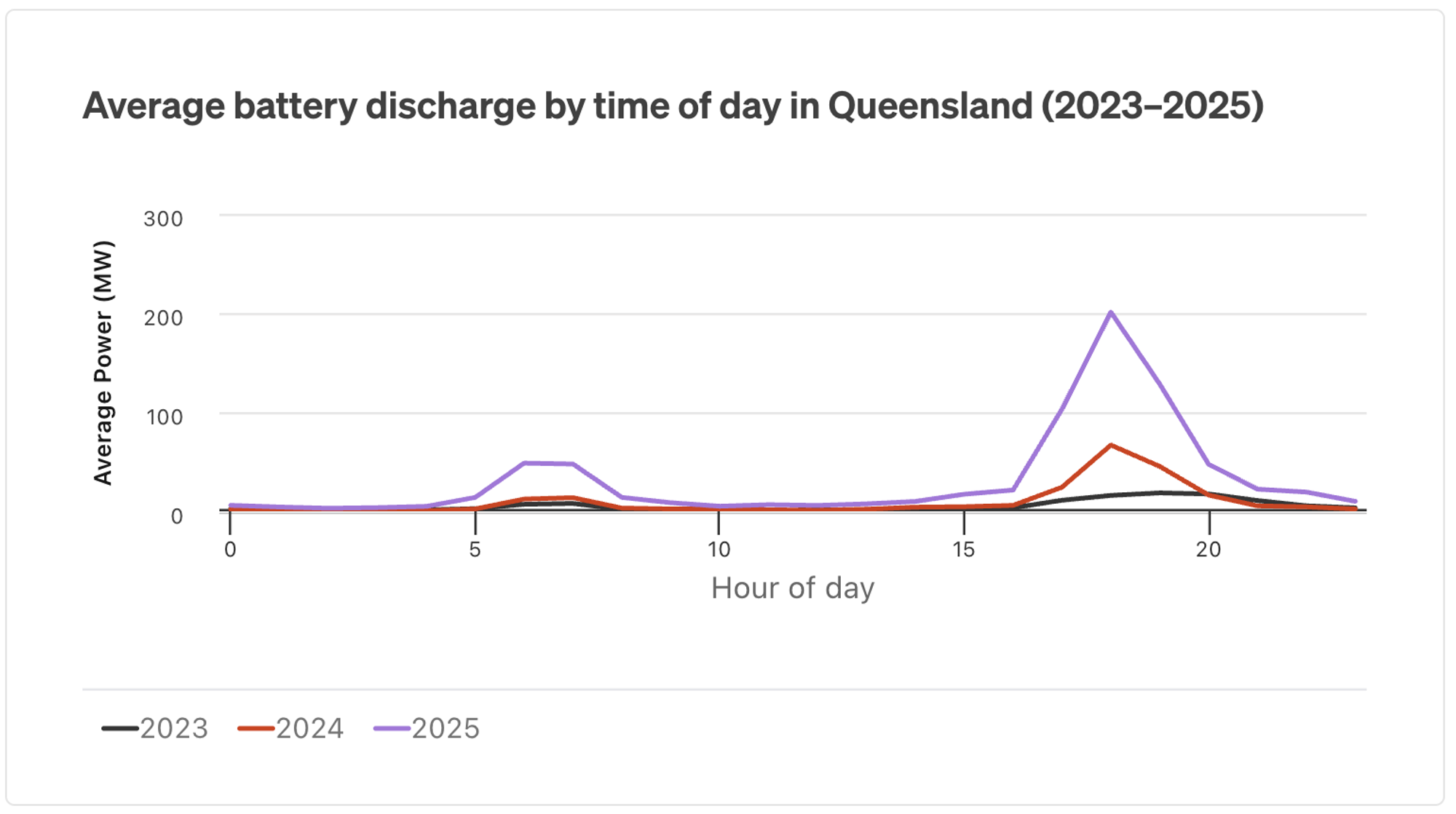
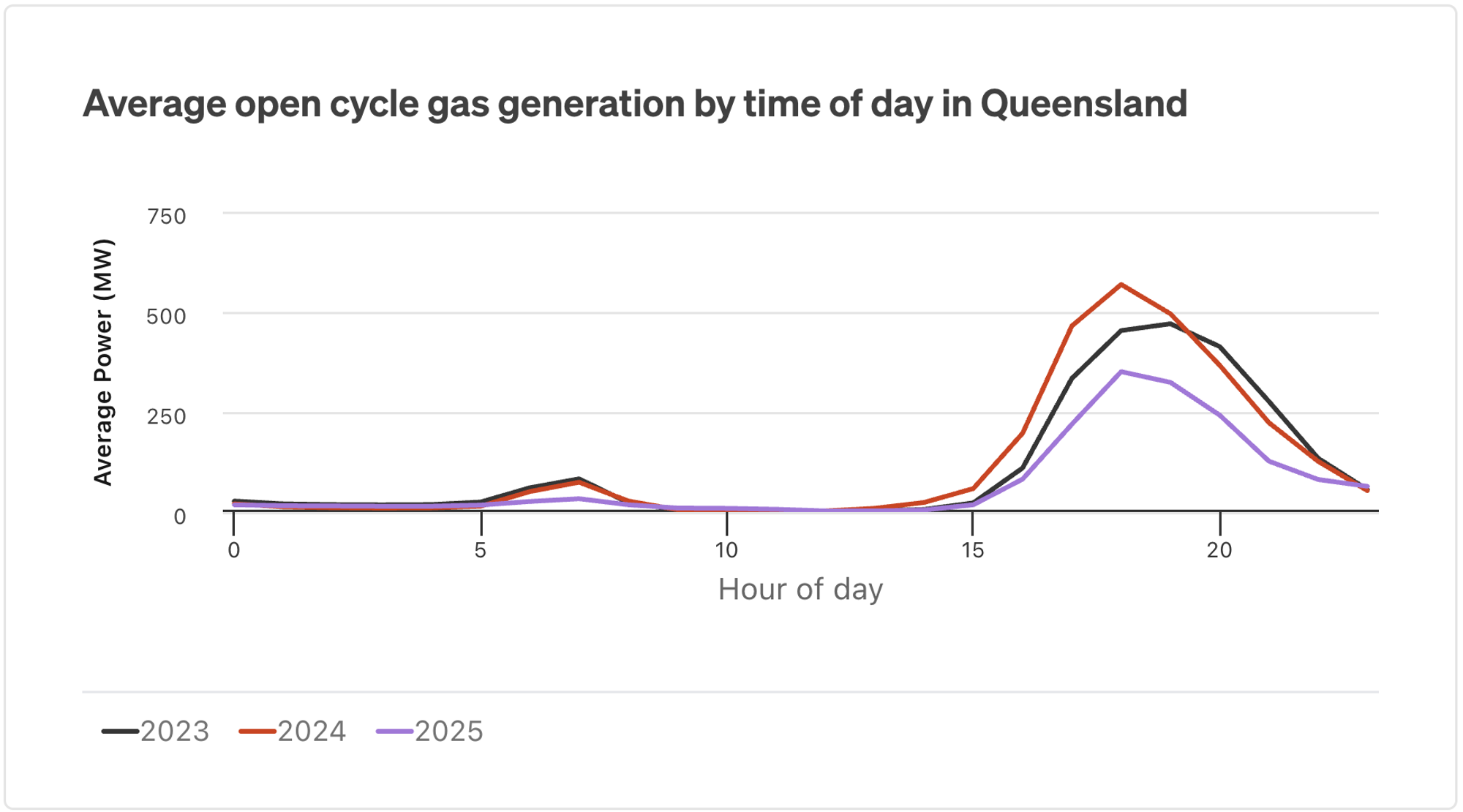
The daily record for battery discharge across the NEM was broken five times in June – on the 2nd, 11th, 12th, 18th and 20th – breaking the previous April record (4380MWh, set on 5 April 2025).
The new highs – most recently 6135MWh on 20 June – were largely driven by the ongoing ramp-up of Koorangie BESS. While Koorangie played a major role throughout the month, its greatest contribution came on the 18th, discharging 761MWh on that day. With a storage capacity of 370MWh, the battery cycled more than twice over the course of the day, considerably more than what has been typical for batteries in the NEM. In fact, Koorangie dispatched more electricity than any other battery on the 18th, despite 8 larger batteries (in terms of total storage) in the grid that have started generating, some fully commissioned.
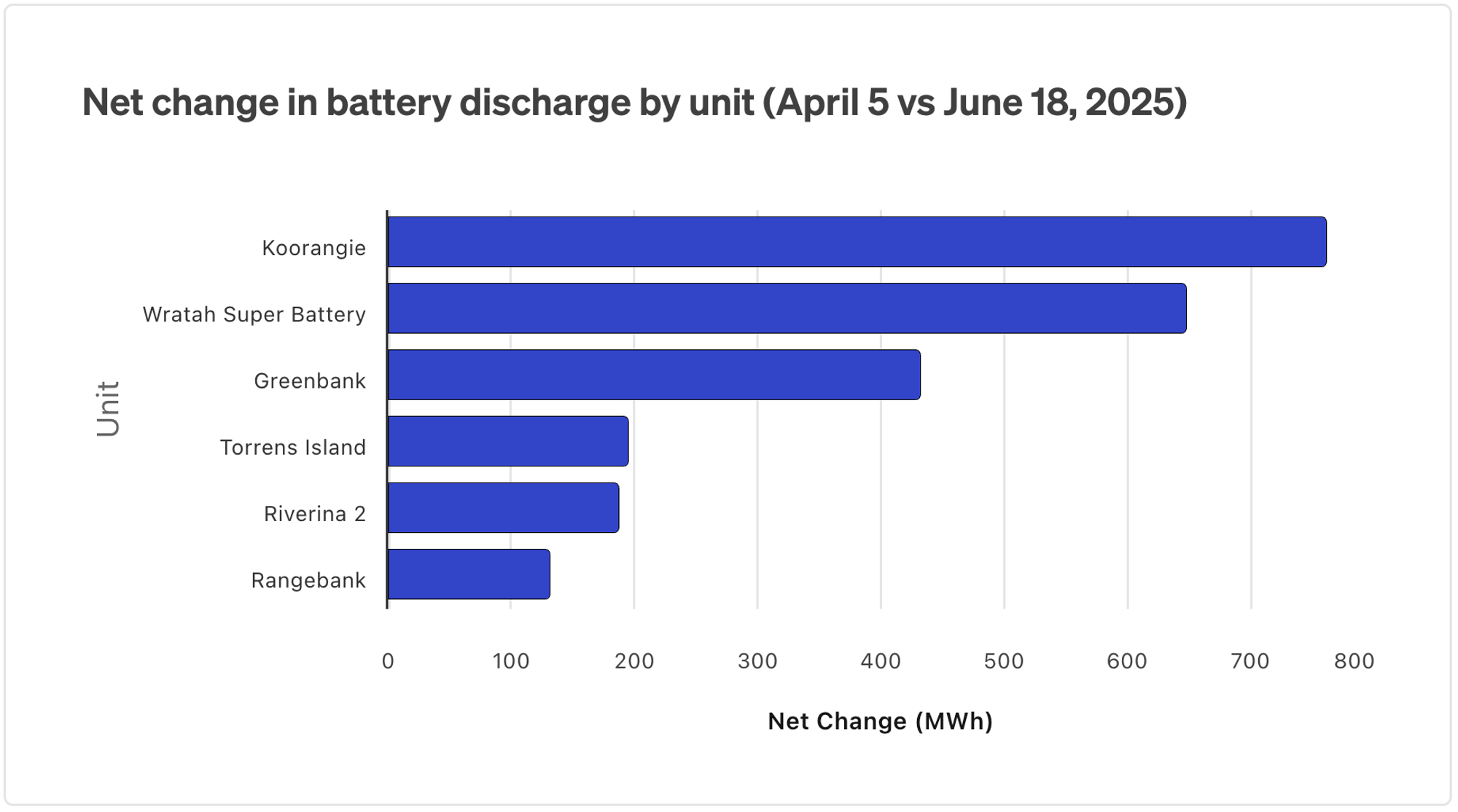
On June 23 and 24, the NEM recorded its highest daily wind generation, with the record now standing at 210,978MWh, 21% higher than the previous record set on 30 May 2024.
While Queensland has broken its daily wind record five times this year, no other state had broken previous records until June. Victoria stands out here – breaking its previous wind generation record on four separate occasions: on the 6th, 16th, 23rd and 24th of June. As Victoria has by far the most wind capacity in the country, variation in wind conditions will have the greatest impact on output NEM-wide. The last five times the NEM has set a daily wind record it has coincided with a Victorian record.
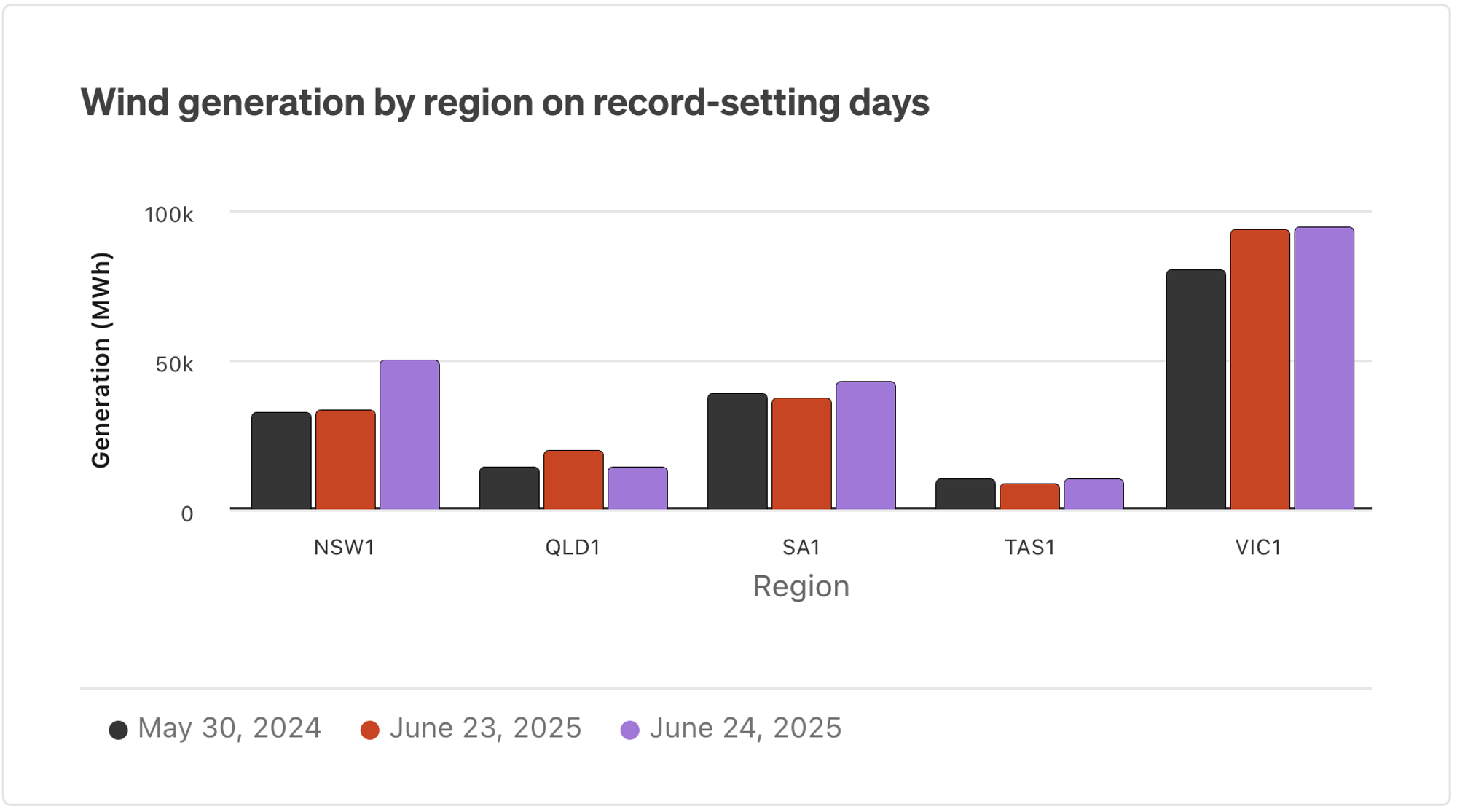
On 23 June, we also saw instantaneous wind records breaking through the evening, peaking at 9491MW at 10:35PM – 39% of the NEM’s total generation.
__
Facilities Update
Yallourn outage
Victoria’s ageing Yallourn coal fired power station, set to close by 2028, saw multiple unit outages through June.
The EnergyAustralia-operated facility supplied over 17% of Victoria’s demand across 2024, yet provided just 11.4% in June 2025. The outages coincided with a cold snap, pushing Victoria to rely more heavily on gas generation. This has stoked concern in some corners about energy supply reliability without the facility, especially when paired with outages from other coal facilities and wind variability.
Ulinda Park first generation
Another big battery joins the grid: Ulinda Park BESS, with a maximum capacity of 155MW and 298MWh of storage, first generated on 18 June. It’s the second battery project to go live from Akaysha Energy, a relatively new entrant to the NEM. Their first project, the Waratah Super Battery first generated in September 2024, with the Brendale BESS slated to commence in 2026.
Wambo Wind first generation
The Wambo Wind Farm recorded its first generation on 21 June. Construction of stage one started in June 2023 and stage two in 2024. Once construction is complete – expected in 2026 – the facility will be Queensland’s second largest wind farm and the fourth largest in Australia.
If you follow our records feed, you will have noticed considerable growth in Queensland’s wind capacity, albeit from a low base. Three of the state’s four largest wind farms began generation in the last 18 months. However, only two further wind projects are currently under construction, each expected to commence in 2027.
There has been increased uncertainty for clean energy developers in the state in recent months – particularly for wind farms – with several projects reassessed and approval for the 450MW Moonlight Range Wind Farm revoked after retrospective changes to the planning process. At the same time, other projects have regained momentum: the 1 GW Theodore Wind and Battery Project recently secured state planning approval after a months-long pause, joining Bungaban and Wongalee, which were also cleared earlier this year. This evolving policy environment remains one to watch closely.
___
See all 98 records and the latest facilities updates at Open Electricity.
If you’ve subscribed to OpenNEM or Open Electricity email updates in the past, we highly recommend signing up again (in footer). We’re rebuilding our list from scratch, and we don’t want you to miss out.

